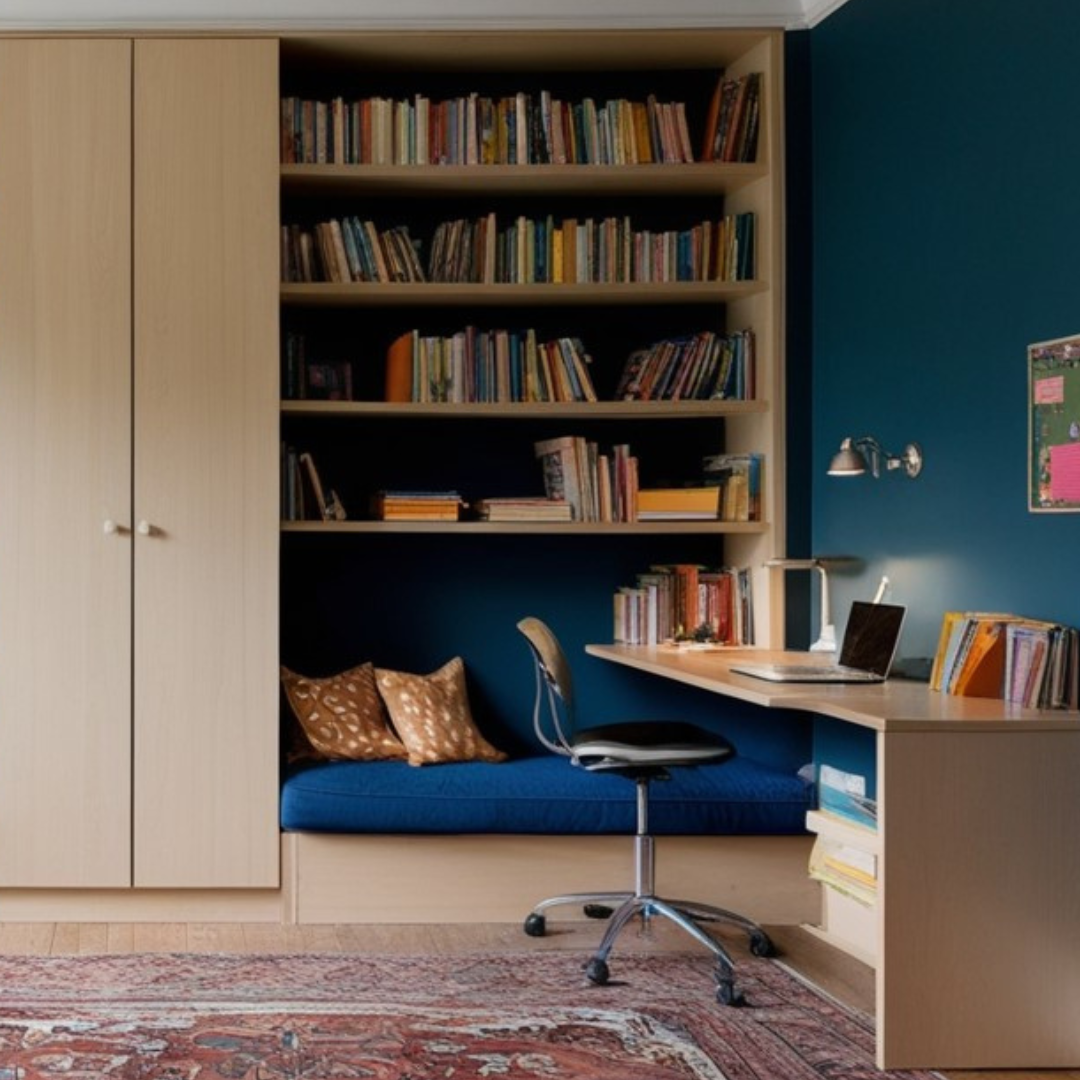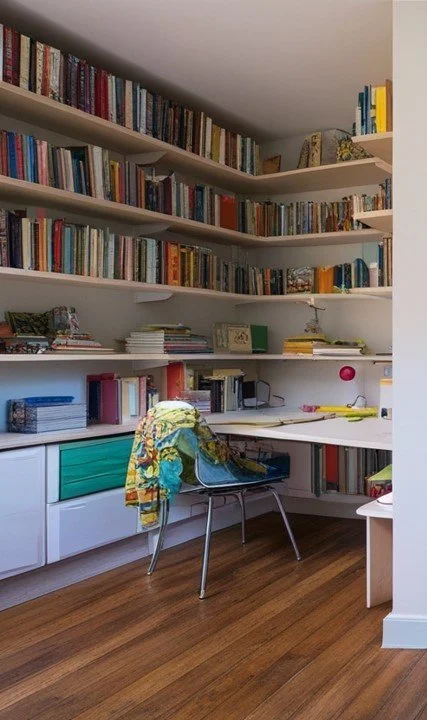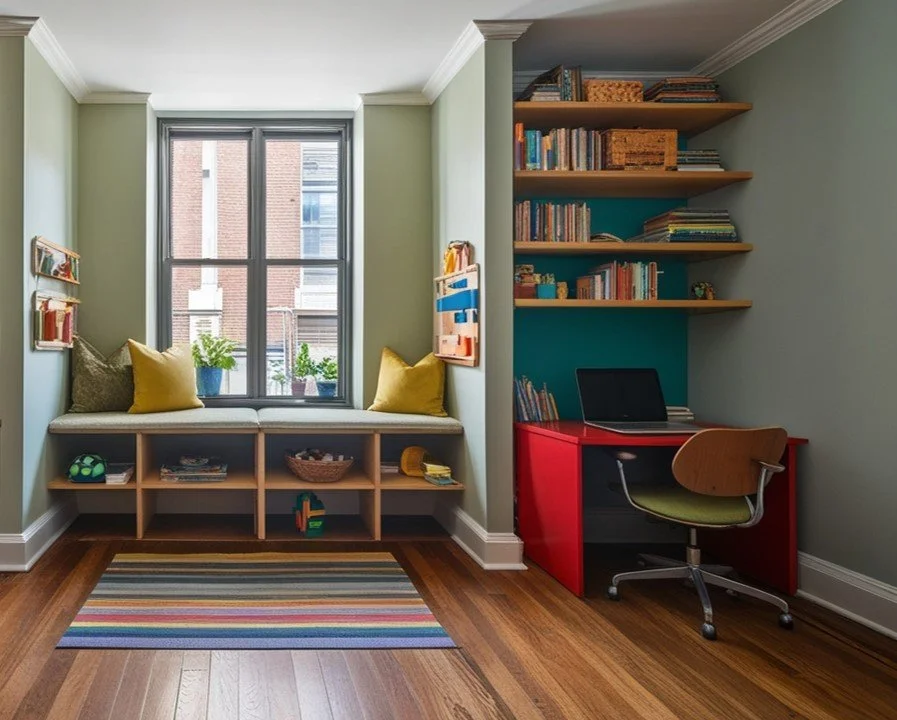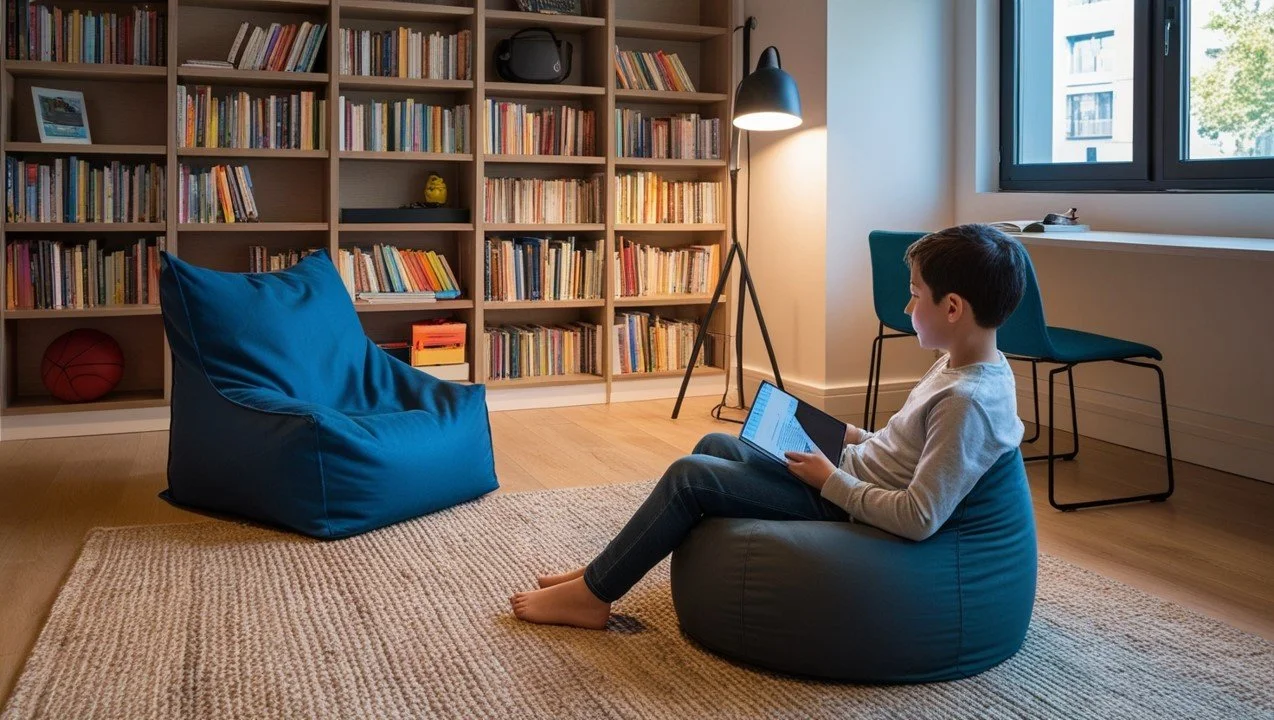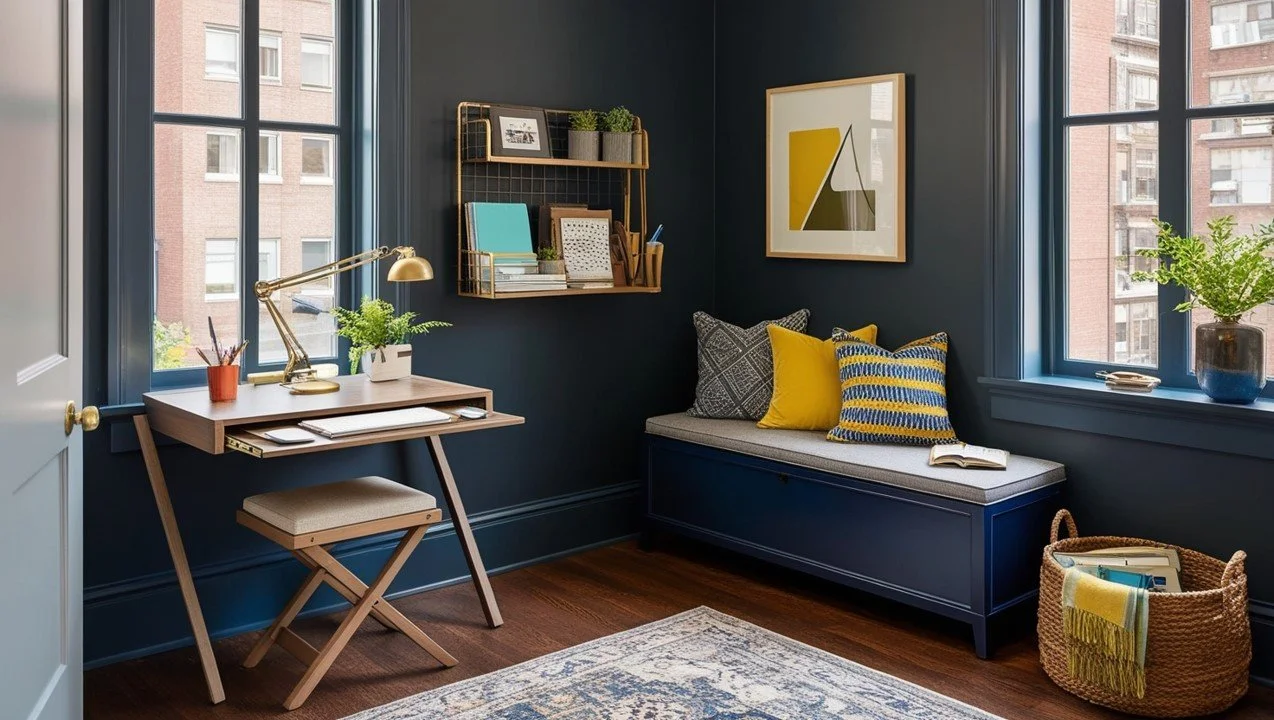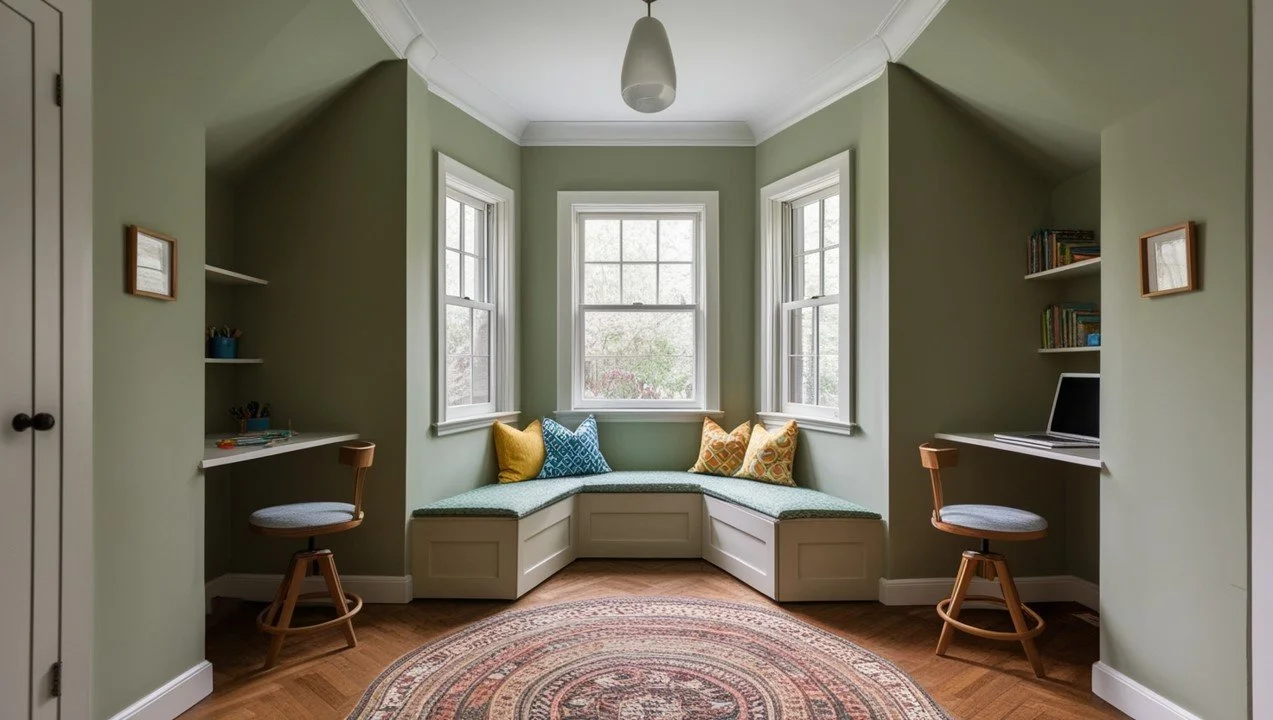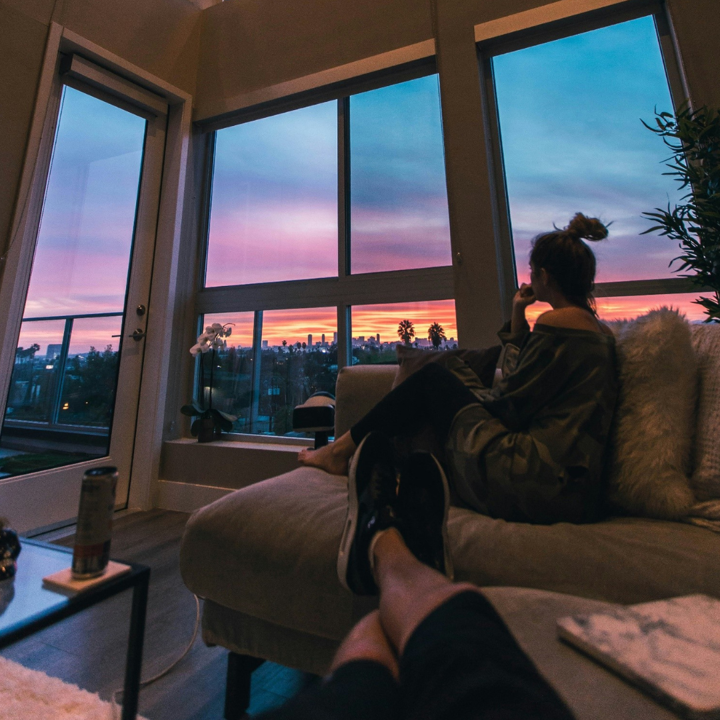Everybody has those odd places in their home, school, or college room that they can't seem to keep out of the way.
You know the ones—those little corners, funny-shaped spaces, or empty spaces between pieces of furniture that just don't feel right for anything useful. So, what do you do with these spaces? Well, with a little imagination, these forgotten spots can be turned into very useful places to learn. As it turns out, making the most of every inch of your living or work room can really help you get things done.
Have you ever thought about how to use those empty corners as a place to study, write, or come up with ideas? Here are some smart design tips that will help you do that!
Why a Well-Designed and Functional Workspace is Crucial
Before we talk about how to make the most of awkward spaces, it's important to understand why students need well-designed workspaces in the first place.
There's more to making a well-thought-out office than just how it looks. The way you focus and remember things can be directly affected by it. Studies have shown that a clean, well-organized space makes people more productive and less prone to distractions. You're more likely to be inspired to study and do your homework when your learning and study space looks nice and is comfy.
In fact, the environment you study in can influence your academic performance just as much as the effort you put into your work. Having a designated space helps to separate relaxation time from study time, giving you mental clarity and focus.
Imagine writing a paper in a cluttered area — the distractions pile up, and your focus wavers.
On the other hand, if you have a dedicated space to work on your tasks, it makes it easier to sit down and get to work. This is where academic essay service come into play; having access to external help can be incredibly useful when paired with a distraction-free, well-designed workspace.
By making even the smallest corner a functional learning area, you’re setting yourself up for success. And an optimized environment leads to optimized results.
Assessing the Space: What Makes a Corner Awkward?
Now that you know how important it is to have a well-designed office, look at the one you have. Why does a corner feel wrong?
Lots of the time, these rooms are either too narrow to be useful or too small to fit normal furniture. A corner is sometimes put in an awkward place, out of the way in a place that doesn't get much light or attention.
How are you going to solve this?
First, figure out where your room or work area has awkward spots.
Is it a little space next to your bed?
A space next to your bookshelf?
Once you know where it is, think about how you could use it in real life, like for storage, a place to read, or even a spot to tuck a mini desk. If you think outside the box, you could potentially come up wot many options to use the space better.
Maximizing Vertical Space: Shelves and Storage
One of the best ways to make use of an awkward corner is by thinking vertically.
Many students overlook the potential of vertical space, but adding shelves or storage units can completely change the functionality of a small nook or corner.
Consider installing floating shelves or a small bookcase in your corner.
Not only does this create a neat place to store your textbooks, notebooks, or art supplies, but it also keeps everything within easy reach.
Adjustable shelving units can offer more flexibility, allowing you to tailor the space to fit your current needs.
Whether you’re stacking books or organizing stationery, vertical space can help you declutter your desk and make studying more efficient.
Tip: keeping your learning area clean and organized is essential for staying focused.
With everything neatly stored on shelves, your workspace becomes more productive, and you’ll spend less time hunting for things.
Incorporating Multipurpose Furniture
If your odd corner is too small for a full desk or for sitting, think about adding furniture that can be used for more than one thing.
Because these pieces of furniture are made to be both useful and take up little space, they are perfect for small rooms.
For instance, students who need an office that’s easy to store away when not in use will love folding desks.
You could also bring in a storage bench that can be used as a seat and has extra storage inside.
You can use the same piece of furniture for different jobs, which is great for small spaces that need to be used for more than one thing.
With the right pieces, you can easily transform a cramped corner into a flexible learning zone where you can study, write, or relax.
Adding a Cozy Nook with Comfort and Lighting
A cozy, quiet area is sometimes all you need to make the right place to read or study.
Putting in a bean bag chair, a floor cushion, or a small soft chair can quickly make an area that doesn't work well for learning a good place to be.
Lighting is another important thing to think about.
A lot of odd places aren't well lit, which can be a problem if you want to read or study there. Putting up a sleek floor lamp or a lamp on the wall can make the room brighter and friendlier.
Natural light is better for your eyes and can help you focus, so try to use it as much as possible.
Don't forget that the place where you learn should feel relaxed and welcoming. By making it feel cozy, you'll want to spend more time there, which will make it a good place to study.
Personalizing the Space for Motivation
To read or study, sometimes all you need is a cozy, quiet place.
A bad place to learn can quickly become a good one by adding a bean bag chair, a floor cushion, or a small soft chair.
It’s always a good idea to let in as much fresh air as much as possible. It's good for your eyes and will help you read. So, if the weather outside is nice, open your windows and breathe that fresh air deep!
Remember that the place where you learn should be nice and relaxed. You'll want to spend more time there after studying there.
Using Portable Storage Solutions
That's why movable storage units are so helpful in small classrooms: a crowded place can easily make your mind cluttered.
You can keep your stuff organized and easy to get to by using baskets, caddies, or small storage bins.
You can easily move these storage options around to fit different study tasks. They are great for students who need to keep their space open.
Creating Zones for Different Learning Activities
Setting up different "zones" in your room can help you stay focused on the job at hand.
If your spot is big enough, you could set up different places for reading, writing, or even art projects.
This zoning technique helps your brain switch between different kinds of work, which makes it easier to focus on a single task at a time.
Conclusion
Weird corners don't have to be ignored or not used. You can turn these places into useful and exciting learning spaces that help you to be more productive and enjoy studying if you know what to do.
As you can see, a little imagination can go a long way, whether you're adding shelves, comfortable seats, or smart lighting.
Making the most of every inch of your room will not only help you get more done, but it will also make it more fun. Why not make that forgotten spot a place where people can learn and be creative?
Read Next:
The Art of Small Space Living: Innovative Design for Compact Homes
Looking to make the most of your small space? These practical tips and clever design hacks will help you to turn your tiny home into a stylish and functional home. From space-saving furniture ideas to creative DIY solutions, this post will help you embrace compact living with ease. Let’s maximize every square foot and make your petite pad feel surprisingly spacious!
Join the Fun!
If you enjoyed this post and you want to keep seeing my weekly blog, the best way to do that is to subscribe.
You can subscribe by downloading my 11 Secrets Only Designers Know to Make Your Space Rock. If you’re curious about how decorators and designers make a home look magazine ready, you’ll love taking a gander at these 11 secrets. You’ll learn how to style your room from the floor up and it will work for ANY space you have.
I write about small space design and decorating, sustainable furniture options, positive self care and a variety of do-it-yourself home décor.
I’d love to connect with you!
“Michael Helwig was top-notch, very professional and responsive to my needs. He allowed me time to explore ideas and try out a variety of combinations until we found the perfect fit. Michael provided detailed information and offered beautiful ideas to make my dream living room become a reality. The furniture he sourced has totally transformed my living room space. Everyone that has seen my new living room has one word, WOW! A special thank you to Michael for a wonderful experience.”
“Michael was very knowledgeable and guided us, with great patience and good humor, through the process of designing our dining room and helping us find the perfect sleeper sofa. He offered really helpful advice when we asked questions - which was often - but at no time did we ever feel pushed. He helped me when I felt like I couldn’t make one more decision. When my new furniture finally arrived I realized everything down to the pillows was perfect. I couldn’t be happier!”
Michael is Principal designer and blogger at Michael Helwig Interiors in beautiful Buffalo, New York. Since 2011, he’s a space planning expert, offering online interior e-design services for folks living in small homes, or for those with awkward and tricky layouts. He’s a frequent expert contributor to many National media publications and news outlets on topics related to decorating, interior design, diy projects, and more. Michael happily shares his experience to help folks avoid expensive mistakes and decorating disappointments. You can follow him on Pinterest, Instagram and Facebook @interiorsmh.

